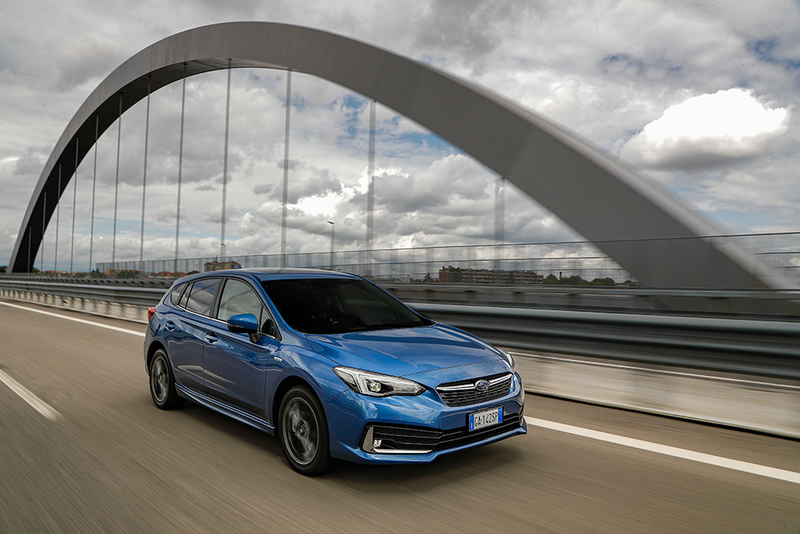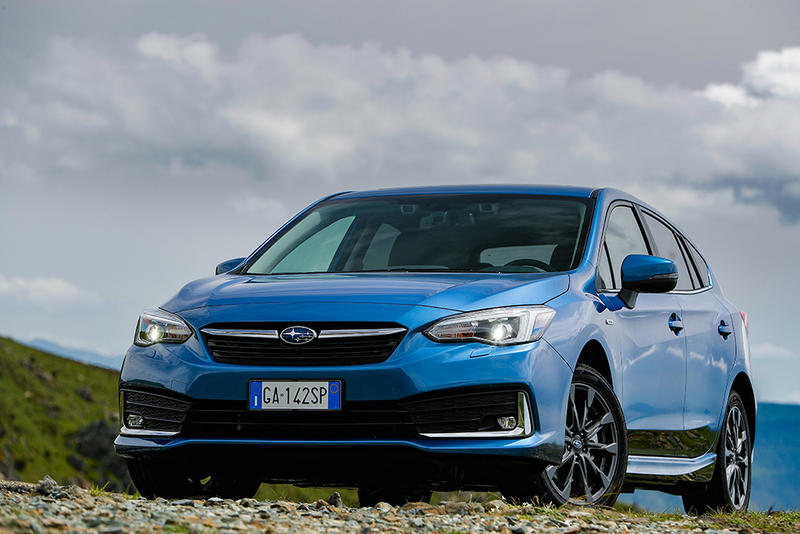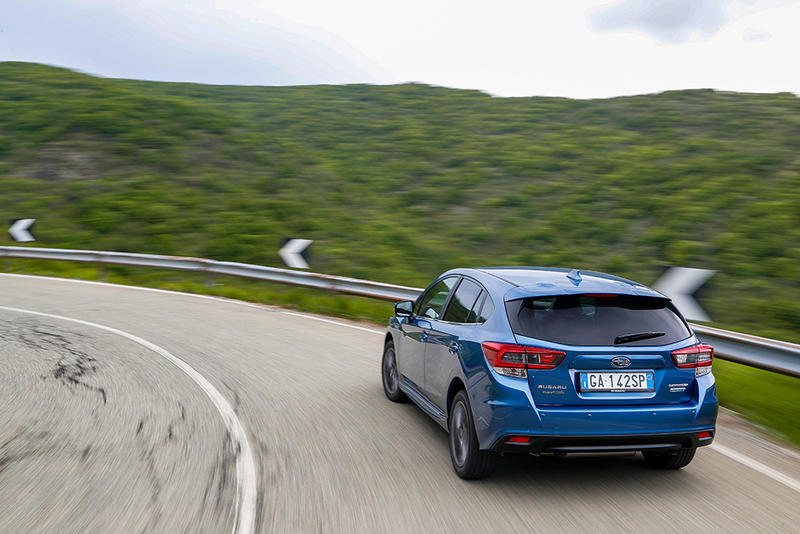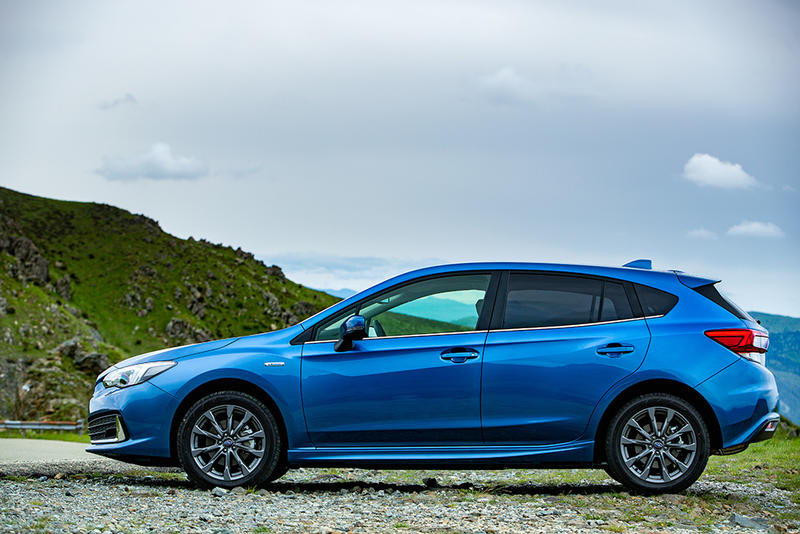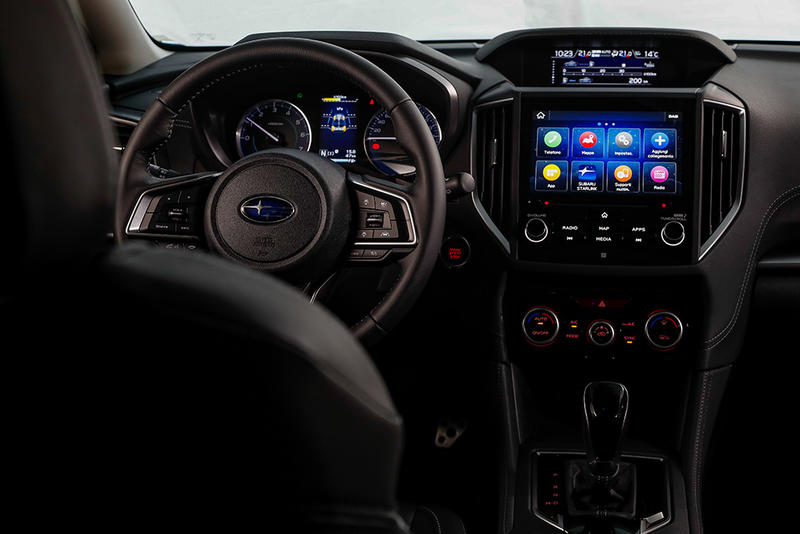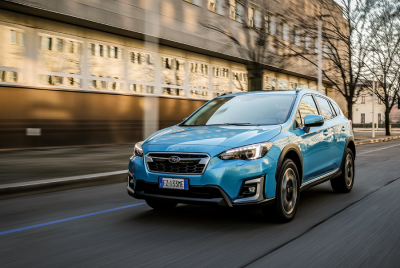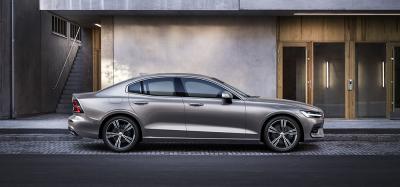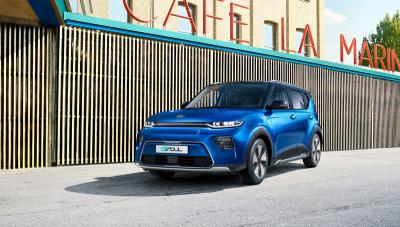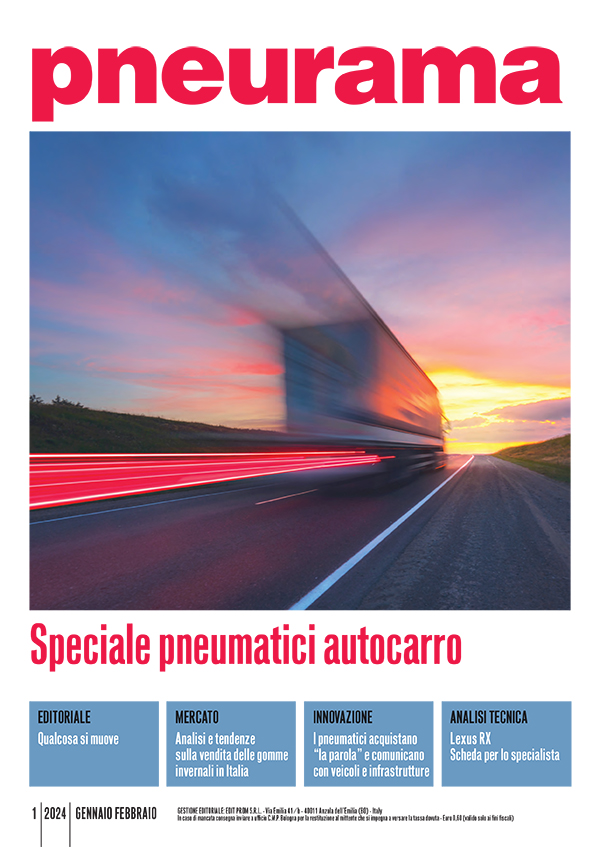Impreza is not just another model, but the name of a lineage, one that evokes epic battles on rally tracks all over the world. Subaru’s ultimate weapon, was entrusted, already at the end of the last century, with the consolidation of the brand, both in motorsports (with multiple World Rally Championships clinched by famous drivers such as Ari Vatanen and Colin McRae) and the commercial arena, creating a global mid-sized sedan able to satisfy the needs of families as well as of the most competitive drivers. Never neglecting some of the brand’s staple features, such as boxer engines, all-wheel drive and perfect weight balance that distinguishes Subaru within the automotive landscape.
Tradition and evolution
Capitalizing on the popularity earned by the previous versions (over 2.5 million units sold), starting from the first Impreza launched back in 1992 all the way up to its fifth generation, less extreme than the fearsome WRX produced in the '90s and presented at the end of 2017, the latest version went through a significant make over while preserving its widely appreciated characteristics, evolving both in design, now a 5-door hatchback, and in equipment, updated with the latest ADAS devices.
In line with the C segment to which it belongs, with its 4.46 metres in length, 1.77 m in width and 1.48 m as maximum height, the Impreza’s wheelbase has now been lengthened to 2.67 metres enhancing the sporty attitude and classic features of the latest Subaru generations. Starting from the tapered front, graced by front light clusters with self-levelling LEDs managed by a SHR (Steering Responsive Headlights) system and the sloping hood, rather close to the ground, made possible by an engine with opposed cylinders and particularly compact. The front, with its popular hexagonal design, boasts a mobile grille, which opens automatically optimizing the flow of cooling air and aerodynamic efficiency.
The shaped sides join at the rear while the roof tapers towards a striking rear spoiler, framing wide wheel arches suitable for 16, 17 and 18 inch rims, with tires ranging from 205/55 R16 to 225/40 R18, concluding with a wide access door to the luggage compartment defined by protruding light clusters with LED technology.
Access on board, is facilitated by a keyless opening (combined with push-button start) as well as a lowered threshold while, once inside, the driver is welcomed by a sporty and well-finished interior as tradition requires. The larger wheelbase (+ 25cm in length and + 35cm in width) guarantees enough room for five passengers, with wraparound front seats and a rear seat of adequate capacity. Only the middle seat at the back suffers from the presence of a bulky transmission shaft tunnel, an inevitable price to pay for having an all-wheel drive system.
The driving position is dominated by a rational dashboard, with classic circular analogue elements such as a rev counter and speedometer positioned around a Tft colour display ready to show several useful bits of information when needed. The console features a 6.5" Mfd multifunction display, below which is the 8" Wvga (Wide Video Graphics Array) touchscreen, tablet-like and with voice function, through which it is possible to interact with the infotainment system and on-board functions, including mileage management for the e-Boxer hybrid version.
The luggage compartment is closer to the ground, and access is facilitated by the enlarged tailgate opening. Reclining the rear seats creates a flat floor, for a volume of up to 1,310 litres, while the absence of the spare wheel (optional) increases useful space.
Hi-tech symmetry
Underneath all current and future Subaru vehicles, we find the SGP (Subaru Global Platform), responsible for the increased size as well as engine and suspension layouts, optimized to accommodate hybrid systems. Structurally stiffer (from 70 to 100%) compared to previous models, the new Subaru ensures better driving precision while reducing the damage resulting from any impact to the benefit of passive safety. Although updated in terms of materials and calibrations, the usual independent-wheel suspension system has been confirmed, with McPherson struts at the front and double wishbones at the rear, and a braking system with four self-ventilating discs, including an energy regeneration system active when braking on the hybrid version.
Two possible engine options: Impreza m.y, 2018 was born with a 4-cylinder 1.6 petrol boxer with multipoint injection, 16-valve DOHC distribution, all-aluminium and further lightened compared to the previous version (- 12 kg), capable of a maximum power of 114hp at 6500 rpm and 15.3kgm of maximum torque at 3600 rpm, equipped with Start&Stop system for fuel economy. A well-balanced engine, between performance and consumption, which despite a rather unimpressive top speed of 180 km/h and a 0-100 km/h acceleration in 12.4 seconds, allows for a spirited drive thanks to the favourable set-up and a particularly low centre of gravity, with declared average consumption in the order of 16.1 km/litre and emissions of 140 g/km of CO2.
In 2020 a second, hybrid power unit was introduced, entrusted to the 2-liter DOHC, also with 4 opposed cylinders, with AVCS variable timing distribution, 150hp at 5,600 rpm and maximum torque of 19.8kgm at 4. 000 rpm, coupled with a three-phase synchronous electric unit with permanent magnets of 16.7hp, positioned inside the gearbox, able to respond simultaneously or independently up to the threshold of 197 km/h top speed, with 0-100 km/h acceleration in 10 seconds. Energy is supplied by a 13.5 kW lithium-ion battery pack, located under the platform above the rear axle so as not to take away space from the boot. Thanks to this combination, the Impreza e-Boxer can count on three driving modes, EV only electric, Motor Assist combined or ICE Engine only.
Unlike its predecessor, the hybrid features a large alternator that acts as a starter and recovers kinetic energy during deceleration.
Both versions benefit from a CVT Lineartronic continuously variable automatic transmission, with a 7-gear simulation and the “traditional” permanent all-wheel drive Symmetrical Awd, with ATS (Active Torque Split), which instantly manages the active distribution of engine torque between the two axles, able to control any skidding by balancing the traction between axles and facilitating road handling. All of this managed by a VDC (Vehicle Dynamic Control) control system, combined with EyeSight, the complex of numerous ADAS devices, including Adaptive Cruise Control, Pre-Collision Throttle Management, Lane Sway and Departure Warning, ready to kick in if the driver seems distracted or sudden obstacles come up along the route.
